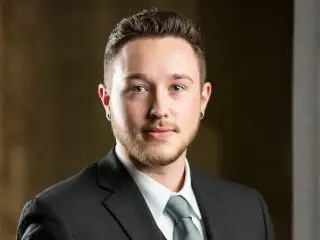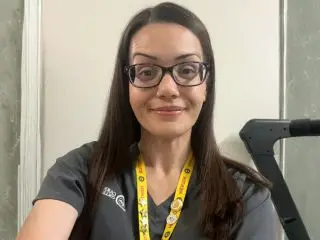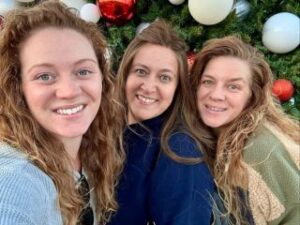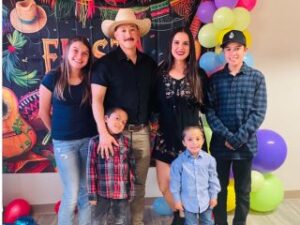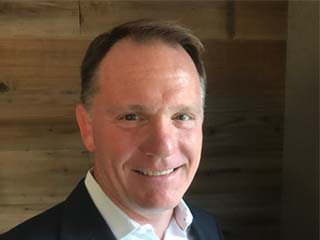 Todd McCarl is the Director of Clinical Education at Pleasant Hill Carrington College. Todd is an advocate of excellent patient care and is dedicated to teaching and running the clinical program. He enjoys teaching in the respiratory therapy program and supports student learning and development as respiratory care practitioners. He also supports new staff and provides opportunities to work together to help the students in their new career fields. Todd took the position as a teacher first and gained the title of Director of Clinical Education. He continues to support the program with the unforeseen COVID-19 pandemic variables. Here, Todd shares a little bit about his background in the Army and the health industry field, research, teaching, and adapting clinical training in the COVID-19 pandemic.
Todd McCarl is the Director of Clinical Education at Pleasant Hill Carrington College. Todd is an advocate of excellent patient care and is dedicated to teaching and running the clinical program. He enjoys teaching in the respiratory therapy program and supports student learning and development as respiratory care practitioners. He also supports new staff and provides opportunities to work together to help the students in their new career fields. Todd took the position as a teacher first and gained the title of Director of Clinical Education. He continues to support the program with the unforeseen COVID-19 pandemic variables. Here, Todd shares a little bit about his background in the Army and the health industry field, research, teaching, and adapting clinical training in the COVID-19 pandemic.
Could you tell us about your background, how you got started in your career as a respiratory therapist, and your journey to becoming director of clinical education at Carrington?
I started in respiratory therapy after graduating with a bachelor’s degree in philosophy, which doesn’t offer a lot of options for employment. I joined the Army after college in 1990, and they gave me lots of options. I explored all those options and I picked respiratory therapy. I was very fortunate to get involved with a lot of research projects throughout the years, and always enjoyed a team and being involved in the research side of being a respiratory therapist. I was doing research with a new modality of therapy, and the company that made that modality gave me the option of coming on board. So I became the director of clinical education for a medical device company. After a few years of that I really felt compelled to teach and give back to the profession that I had been working in for so long, and saw the opportunity to teach at Carrington and began doing that. I have always enjoyed being as close to the bedside as possible, and working with patients. Becoming the director of clinical education gave me that opportunity to work with our students, teaching the students, but also maintain that tie and connection to the clinical side and the patient care side.
What do you like about the clinical side and the patient care side, and what you like about the research side?
I’m a naturally curious person, and throughout my career as a respiratory therapist, I’ve always been driven by the idea that there are better ways that we can do things. Is there a different way that we can care for the patients to get better outcomes? Can we achieve more? And it only works if we take what we learn, and we take the technology that we developed, and we actually use it to make the lives of our patients better. I’ve been very fortunate to be able to do that. It was a natural extension to want to bring that same curiosity and desire for continual improvement to education. My goal is to inspire and motivate a whole new generation of young therapists to think differently about the care that we give. It is a science, but it also becomes an art.
What kind of clinical experience do your students receive, and how has the COVID-19 pandemic changed that?
The COVID-19 outbreak changed the way we could do things. Our students could no longer go to the hospitals. Traditionally, our students would spend two or three rotations going out into the clinical world with our clinical partners, the hospitals that we work with. They would learn from healthcare professionals in the field, and they would care for patients, and that would be a very important part of their training. When COVID broke out, our students couldn’t go into the hospital. We’ve had to think differently about the training that we provided. My goal was to invent a new clinical practice, a new training that we could do within the safety of the lab, but still, replicate the clinical experience and what it feels like to care for a patient. I built a clinical simulation experience based on case studies, real case studies, real clinical data, real-life scenarios. We created a hands-on approach to gathering information, evaluating the data that we were getting because we couldn’t necessarily get it just from the patient themselves. We had to create an environment where the student could get that information, and make very important decisions about patient care. We had to recreate the unpredictability or pragmatic changes that take place in the clinical area where you can do all the right things and sometimes a patient gets better and sometimes they don’t. And then what are you going to do about it? That gave us a really good opportunity to challenge the students like we hadn’t been able to challenge them before with a variety of scenarios. When the COVID pandemic started to resolve, our students went out into the clinical world to learn from therapists, working in the field, and care for real patients. We found that from a skills standpoint and a problem solving and critical thinking standpoint, but also from a work ethic and professionalism standpoint, that we created a really good environment in the clinical simulation lab where the students came out more ready to be respiratory therapists. And the feedback from our partners in the field was that the students did a fantastic job. They were an asset to all the organizations that they went into and challenged those organizations to think differently about things, to be aware of new data and new therapies. It ended up being a really good symbiotic relationship with the clinical partners, and I think it really opened up a lot of opportunities for students. COVID forced us to think differently.
What advice would you give to students who are looking to go into respiratory therapy?
My advice would be to come in with the right goals and realize that we, in this particular field, maybe unlike most healthcare fields, have a unique perspective. We do learn the science. We do learn the skills, but we have to be able to evaluate each patient on their own merit. That means you have to be dedicated to continual learning. You have to have a very high work ethic and be adaptable because our day changes, moment to moment. You have to be willing to think differently on behalf of your patient. It’s big picture thinking, real problem solving, thinking critically. You need passion, work ethic, and be able to adapt to rapidly changing situations; it requires a lot of self-drive and internal motivation to get the most out of it and to understand the nuances.
What are you excited about in the coming year for you and your students as we hopefully emerge from the worst of this pandemic?
It’s a tremendous opportunity to take decades of research and experience and apply it to a new generation. That’s the goal and it’s a real honor and huge challenge to motivate and inspire the next generation of respiratory therapists.
